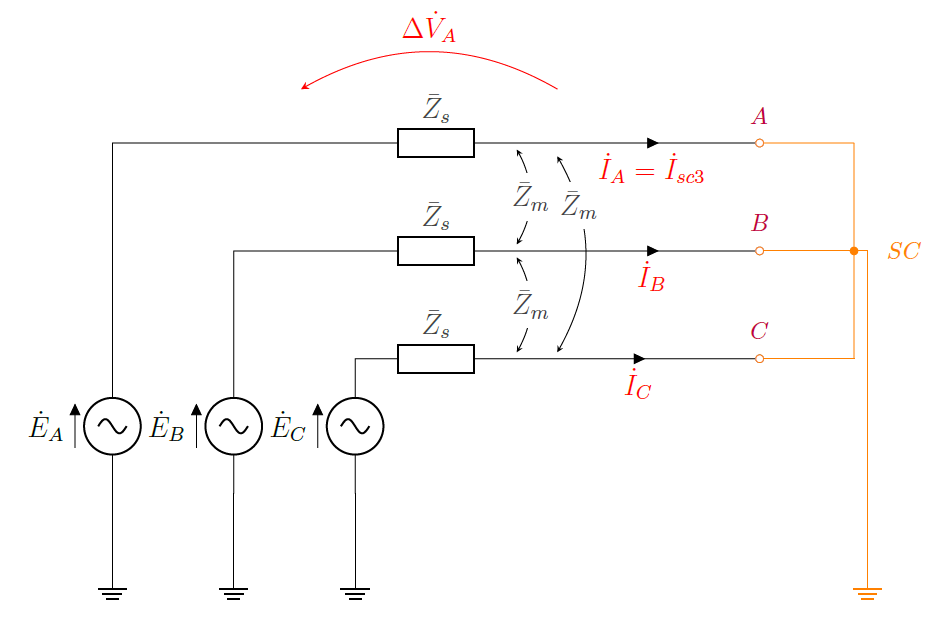3-Phase Short-Circuit Power and Current Calculation
In addition to sequence impedances, the pair 3-phase and 1-phase short-circuit powers, S¯sc3 and S¯sc1, or the pair 3-phase and 1-phase short-circuit currents, I˙sc3 and I˙sc1, can also be utilized to define the voltage source element.
In this section, S¯sc3 and I˙sc3 are calculated considering that the voltage source element is at a 3-phase short-circuit condition, as presented in Figure 4.

Figure 4: Vsource Element at a 3-phase Short-Circuit Condition
The 3-phase short-circuit current and the line-to-line voltage between phases A and B are as follows.


Applying KVL on phase A, one can obtain:

Applying KCL to node SC,

By applying the equations above and also considering that Z¯1 = Z¯s − Z¯m, one can obtain:

From Equation 13, it is possible to obtain the magnitude of the 3-phase short-circuit current as function of the positive sequence impedance, as presented below:


Since the voltage source is symmetric, the 3-phase short-circuit power is defined as three times the power provide by each phase.

Then, it is possible to obtain the magnitude of the 3-phase short-circuit power as function of the positive sequence impedance.


